
A Safe & Natural Easter Egg Hunt
Author: be well™ with Big Y® Registered Dietitian Team
Get creative with natural egg dyes and you and your children will have a weekend full of new family traditions.
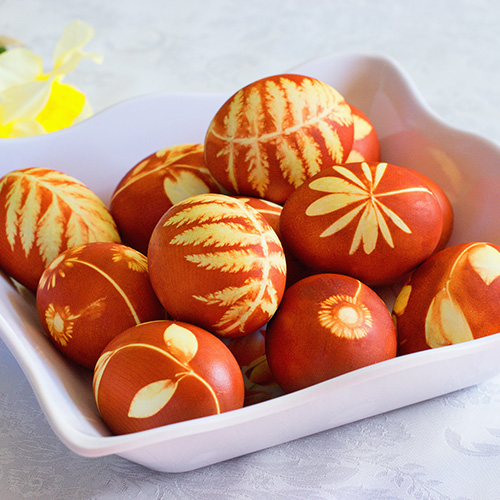
Dying and hiding eggs for an Easter egg hunt is a time-honored part of the Easter holiday for many families. Dying eggs with natural sources of colors, like fruits and vegetables, is also gaining momentum. As you hop into the Easter egg hunt spirit, here are a few food safety pointers to keep in mind:1
- Uncooked and cracked eggs may carry bacteria like Salmonella enteritidis. For this reason, uncracked, raw eggs should be cooked prior to dying. And remember to have all kitchen helpers wash hands properly with soap and running water before and after handling raw eggs.
- Eggs are perishable. Any eggs left out of refrigeration longer than 2 hours should not be consumed. If you’re going to hide eggs for an Easter egg hunt, be sure to only consume eggs that were out of refrigeration less than 2 hours.
- Choose the right spot! Be mindful to keep hidden eggs away from dirt, pets and sources of harmful bacteria and chemicals. If eggs will be consumed after the hunt, be sure they are rinsed and placed back into refrigeration within their 2-hour food safety window.
Interested in experimenting with all-natural egg dying this year but don’t know where to start? Begin with these steps:
Step #1:
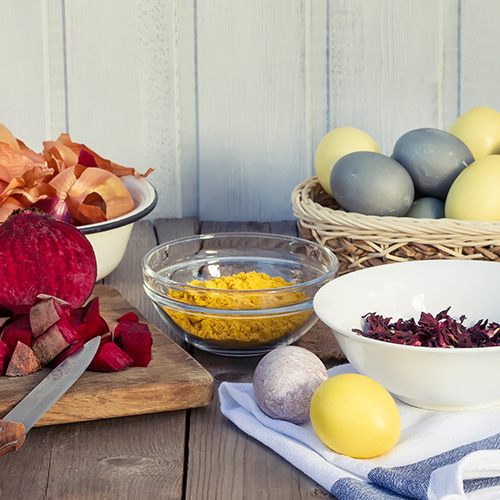
In a large pot, add 4 cups your choice of chopped fruits or vegetables (see list below) to 4 cups water. Stir in 2 tablespoons white vinegar. Cover and bring to a boil.
- Bright Pink – Beets
- Blue – Red Cabbage
- Light Yellow – Lemon Peel
- Purple – Blueberries
- Lavender – Blackberries
- Orange/Brown – Yellow Onion Skins
Step #2:
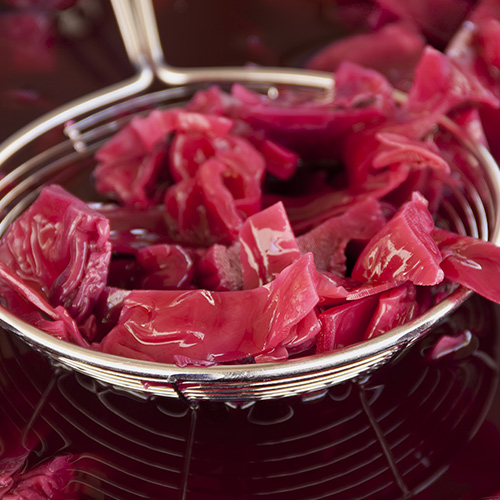
Reduce heat and let simmer for 15 minutes. Remove from heat, strain mixture with a fine sieve and cool colored liquid to room temperature.
Step #3:
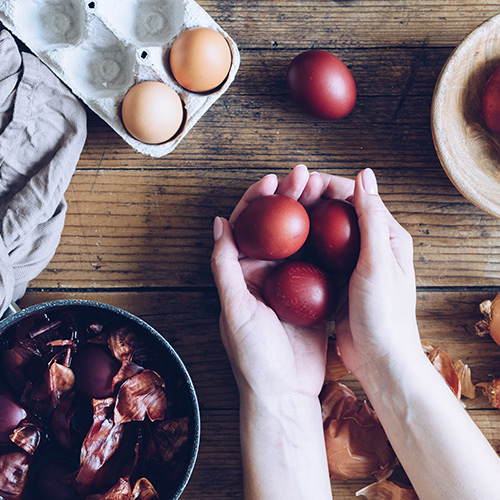
Submerge hard-boiled eggs in colored liquid and store in refrigeration for a minimum of 2 hours. For more vibrant, darker colors, let eggs soak overnight.
Step #4:
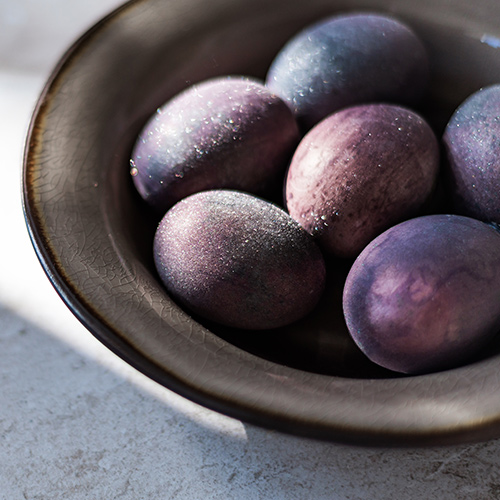
Strain eggs from colored liquid and store in a bowl inside the refrigerator— not back in a used egg carton or on the door shelf of the refrigerator.
1 Partnership for Food Safety Education. Egg-stra care for spring celebrations. https://www.fightbac.org/egg-stra-care-for-spring-celebrations/. Accessed on 3/17/23.
Reviewed 3/1/2023


